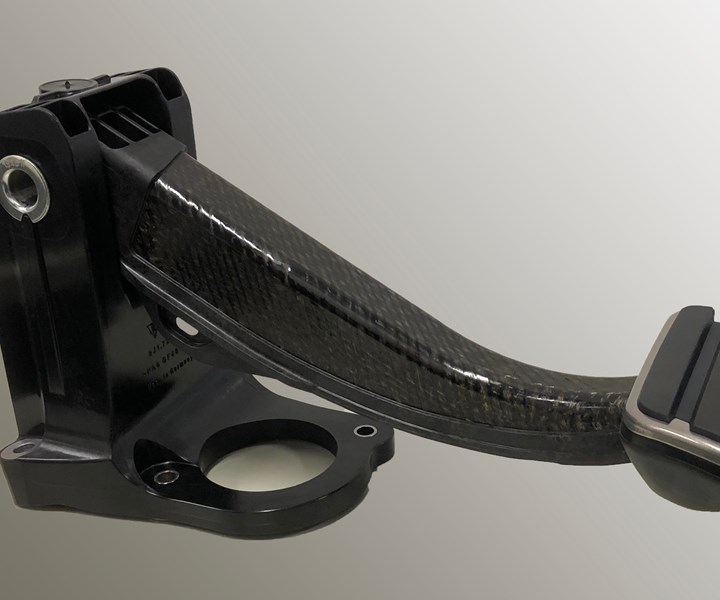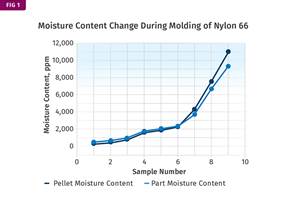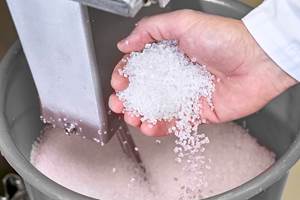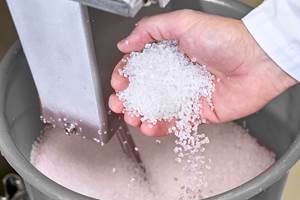'First' All-Plastic Brake Pedal for Battery-Electric Sports Car
Lanxess Tepex nylon 6 composite insert and a glass-fiber reinforced nylon 66 compound for back injection/overmolding key to this innovation.
What is said to be the first commercial all-plastic pedal for a battery-electric sports car is featured in the Porsche Taycan, and its composites structure makes this component 50% lighter than a comparable steel design. In collaboration with Lanxess High Performance Materials (HPM) 大象传媒 (U.S. office in Pittsburgh, Penn.), the pedal was manufactured by BOGE Elastmetall (U.S. office in Novi. Mich.), a global provider of vibration technology and automotive plastics applications.
Says Klaus Vonberg, an expert in lightweight design at HPM's Tepex Automotive Group, “The structural component meets the demanding load requirements thanks to the tailor-made fiber-layer construction of Tepex nylon 6 insert and additional local tape reinforcement. Extensive automation allows the geometrically complex safety-critical component to be manufactured efficiently and in a way that is suitable for large-scale production.”

The fully consolidated semi-finished products Tepex dynalite have a thermoplastic matrix that is typically reinforced with layers of continuous glass-fiber fabric. The brake pedal for the battery-electric sports car uses a composite structure with a nylon 6 matrix, which contains unidirectional fiber layers inside and fabric layers with fibers arranged at 45° angles on the two covering layers. The inner layers are what give the component its excellent tensile and bending strength.
Tapes are thin plastic strips with unidirectionally oriented, high-strength continuous fiber systems embedded in the thermoplastic matrix. Multiple tapes with glass-fiber rovings are used in the brake pedal to reinforce the bottomside of the component. Since the tapes and the Tepex insert consist of mutually compatible plastic matrices, the tapes can simply be welded onto the Tepex insert using a laser. This results in tailor-made laminates with fiber layers that follow the load paths precisely and are adapted to the exact load-specific component requirements. The covering layers of the insert with their 45° fiber layers, combined with the tapes on top, thereby ensure the high torsional strength of the pedal.
Says Daniel Häffelin from the Innovation Center at BOGE Elastmetall.“This tailor-made fiber-layer structure and the combination of organic sheets and tapes have made it possible to reduce brake pedal weight even further while simultaneously achieving the exceptionally high level of mechanical characteristics that such a safety-critical component needs to provide.” There are currently four different brake pedal designs in mass production based on an all-plastic version. For all component versions, the load paths are also optimized to suit the various torsion directions.
The brake pedals are manufactured in an automated process using hybrid molding in short cycle times suitable for large-scale production. The method integrates draping of the Tepex insert and the tapes in the subsequent injection molding process. The first stage of production involves aligning the tapes precisely using optical measuring systems and then positioning them on the Tepex insert so that they can be welded to it. This assembly is thermoformed and then back-molded with nylon 66 by an injection molding process.
According to Vonberg, there are new opportunities emerging in the field of electric vehicles for thermoplastic composite structures with tailored fiber orientation. “Examples of applications for Tepex inserts include front-end systems and bumper beams, brackets for electrical and electronic modules, trunks and spare wheel wells, battery housings and covers, structural components in the vehicle's 'greenhouse' section and structural trims in the underbody area to protect the battery.”
Related Content
General Polymers Thermoplastics to Further Expand Distribution Business
NPE2024: Following the company’s recent partnership buyout, new North American geographic territories are in its sight.
Read MoreWhat's the Allowable Moisture Content in Nylons? It Depends: Part 2
Operating within guidelines from material suppliers can produce levels of polymer degradation. Get around it with better control over either the temperature of the melt or the barrel residence time.
Read MorePrices Up for All Volume Resins
First quarter was ending up with upward pricing, primarily due to higher feedstock costs and not supply/demand fundamentals.
Read MorePrices Bottom Out for Volume Resins?
Flat-to-down trajectory underway for fourth quarter for commodity resins.
Read MoreRead Next
See Recyclers Close the Loop on Trade Show Production Scrap at NPE2024
A collaboration between show organizer PLASTICS, recycler CPR and size reduction experts WEIMA and Conair recovered and recycled all production scrap at NPE2024.
Read MoreBeyond Prototypes: 8 Ways the Plastics Industry Is Using 3D Printing
Plastics processors are finding applications for 3D printing around the plant and across the supply chain. Here are 8 examples to look for at NPE2024.
Read More










